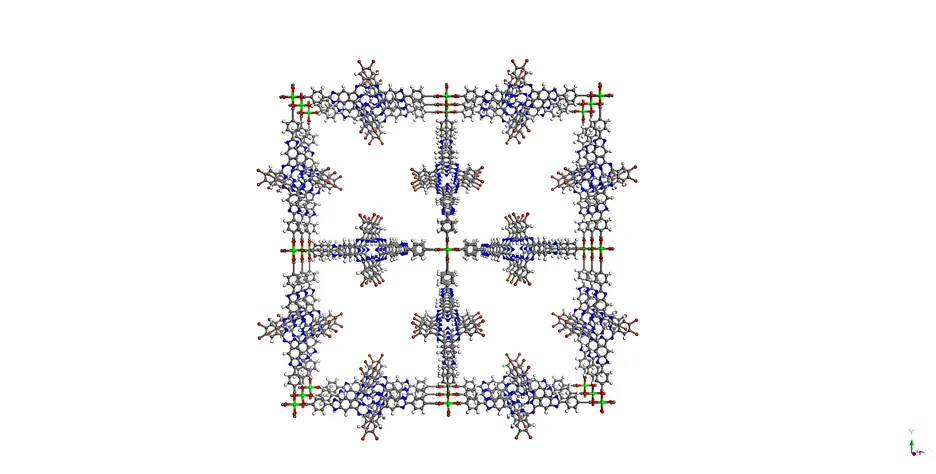| Consortium: | |
| Prof. Dr. Christof Wöll, Eggenstein-Leopoldshafen KIT Institute of Functional Interfaces | |
| Prof. Dr. Stefan Bräse, Karlsruhe KIT Institute of Organic Chemistry | |
| Prof. Thomas Heine, Dresden TU Dresden Chair of Theoretical Chemistry | |
| Project: | Photophysical and photoelectric properties of phthalocyanine-based MOF thin films |
| Abstract: | The overarching goal of the project during the second funding period is the fabrication of chromophore-based, crystalline and oriented MOF thin films (SURMOFs) on conducting and/or transparent substrates. Besides porphyrins (PPs), we will study phthalocyanines (PCs) and porphyrazines (PYs), both absorbing at longer wavelengths and hence nicely complementary to the PPs. The monolithic SURMOF coatings will be characterized using photophysical and electrochemical methods. In selected cases, these films will be integrated in devices for specific applications, e.g. for photovoltaics. This work will complement the successful project on PP-based SURMOFs active during the first funding period and will exploit the higher stability of PCs and PYs for the fabrication of photovoltaic and photo-electrochemic devices. Our experience gained with the theoretical description of PP-based SURMOF photophysical properties during the previous funding period will be used to screen a large number of PCs and PYs in silico. This step is mandatory, since the synthesis of PCs and PYs is much more challenging as in case of the PPs. Only the most promising PC and PY candidates will then be synthesized and used to fabricate SURMOFs. Moreover, the layer-by-layer SURMOF growth process allows the hierarchical growth of SURMOFs carrying dyes of different absorption range. Consecutive stacking of PPs, PCs and PYs with absorption in increasing wavelength ranges will allow the design of photovoltaic devices with covering the entire solar spectrum, ranging from ultraviolet to infrared. |
| Publications: | |
| J. Liu and C. Wöll ”Surface-supported metal–organic framework thin films: fabrication methods, applications, and challenges” Chem. Soc. Rev. 2017, 46, 5730-5770 DOI: 10.1039/C7CS00315C | |
| M. Adams, M. Kozlowska, N. Baroni, M. Oldenburg, R. Ma, D. Busko, A. Turshatov, G. Emandi, M. O. Senge, R. Haldar, C. Wöll, G. U. Nienhaus, B. S. Richards and I. A. Howard “Highly Efficient One-Dimensional Triplet Exciton Transport in a Palladium–Porphyrin-Based Surface- Anchored Metal–Organic Framework” ACS Appl. Mater. Interfaces 2019, 11, 15688-15697 DOI: 10.1021/acsami.9b03079 | |
| Y.-Y. Wang, S.-M. Chen, R. Haldar, C. Wöll, Z.-G. Gu, J. Zhang “Van der Waals Epitaxial Growth of 2D Metal-Porphyrin Framework Derived Thin Films for Dye- Sensitized Solar Cells” Adv. Mat. Interfaces 2018, 5, 1800985 DOI: 10.1002/admi.201800985 | |
| R. Haldar, K. Batra, S. M. Marschner, A. Kuc, S. Zhan, R. A. Fischer, S. Bräse, T. Heine, C. Wöll “Bridging the Green Gap: Metal-Organic Frameworks Heteromultilayers Assembled From Porphyrinic Linkers Identified by Using Computational Screening” Chem. Eur. J. 2019, 25, 7847-7851 DOI: 10.1002/chem.201901585 | |
| X. Liu, M. Kozlowska, T. Okkali, D. Wagner, T. Higashino, G. Brenner-Weiβ, S. M. Marschner, Z. Fu, Q. Zhang, H. Imahori, S. Bräse, W. Wenzel, C. Wöll, L. Heinke “Photoconductivity in Metal-Organic Framework Thin Films” Angew. Chem. Int. Ed. 2019, 58, 9590-9595 DOI: 10.1002/ange.201904475 | |
| M. Oldenburg, A. Turshatov, D. Busko, S. Wollgarten, M. Adams, N. Baroni, A. Welle, E. Redel, C. Wöll, B. S. Richards and I. A. Howard “Photon Upconversion at Crystalline Organic–Organic Heterojunctions” Adv. Mater. 201628, 8477-8482 DOI: 10.1002/adma.201601718 | |
| S. Grosjean, Z. Hassan, C. Wöll, S. Bräse “Diverse Multi-Functionalized Oligoarenes and Heteroarenes for Porous Crystalline Materials” Eur. J. Org. Chem. 20197, 1446-1460 DOI: 10.1002/ejoc.201801232 | |
| S. He, F. Biedermann, N. Vankova, L. Zhechkov, T. Heine, R. E. Hoffman, A. De Simone, T. T. Duignan, W. M. Nau “Cavitation energies can outperform dispersion interactions” Nat. Chem. 201810, 1252-1257 DOI: 10.1038/s41557-018-0146-0 | |
| D. Coupry, M. Addicoat, T. Heine “Explicit treatment of hydrogen bonds in the Universal Force Field: validation and application for Metal- Organic Frameworks, hydrates and host-guest complexes” J. Chem. Phys. 2017147, 161705 DOI: 10.1063/1.4985196 | |
| N. Huang, L. Zhai, D. E. Coupry, M. A. Addicoat, K. Okushita, K. Nishimura, T. Heine, D. Jiang “Multiple-component covalent organic frameworks” Nature Comm. 20167, 12325 DOI: 10.1038/ncomms12325 | |
| R. Haldar, L. Heinke, Ch. Wöll “Advanced Photoresponsive Materials Using the Metal-Organic Framework Approach” Adv. Mater. 2019, 190227 DOI: 10.1002/adma.201905227 |
